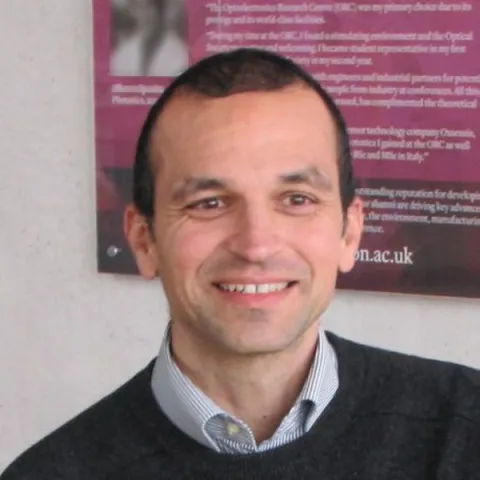About the project
Just as starlight falling on the surface of the Earth twinkles when affected by atmospheric turbulence, so too do optical communication signals transmitted from an orbiting satellite to a ground-station. In this project, you will design and fabricate photonic lantern-based turbulence mitigation systems to enable the next-generation of lasercom.
Turbulence induced scintillation is a phenomenon we are all familiar with – from the twinkling of stars to the shimmering above a hot road, this effect, whilst no doubt attractive, is the bane of free-space optical communication.
Scintillation is a serious deal-breaker for next-generation lasercom and one that you, in this project, will work towards solving. Scintillation results in intolerable excursions of received power that can cause communications signals to fade in and out over time or to not be detectable at all. The core of this issue is that the single-mode laser light produced by transmitters is rendered highly multimodal after propagation through turbulent air. Such beams are challenging to tightly focus onto the necessarily small area photodetectors required for beyond Gigabit/s datarates.
But what if we could separate the multiple modes of such a beam and recombine them into a pristine, single-mode ray? In this project, that is exactly what you will do. By designing and fabricating photonic lanterns, fused fibre-optic devices capable of demultiplexing a multimodal beam into a number of single-mode tributaries, you will develop turbulence mitigating subsystems suitable for high-speed free-space optical communications.
This project offers the prospect to solve one of the most important problems faced by the emerging lasercom industry, become an expert in the fabrication of photonic lanterns and explore their fascinating physics.
Throughout this project you will gain experience handling and splicing optical fibre, building fibre-optic and free-space optical communication systems using lasers, modulators, photodetectors, high-speed (>70GHz) arbitrary waveform generators and oscilloscopes and, importantly, fabricating photonic lanterns.
The School of Optoelectronics (ORC) is committed to promoting equality, diversity inclusivity as demonstrated by our Athena SWAN award. We welcome all applicants regardless of their gender, ethnicity, disability, sexual orientation or age, and will give full consideration to applicants seeking flexible working patterns and those who have taken a career break. The University has a generous maternity policy, onsite childcare facilities, and offers a range of benefits to help ensure employees’ well-being and work-life balance. The University of Southampton is committed to sustainability and has been awarded the Platinum EcoAward.
